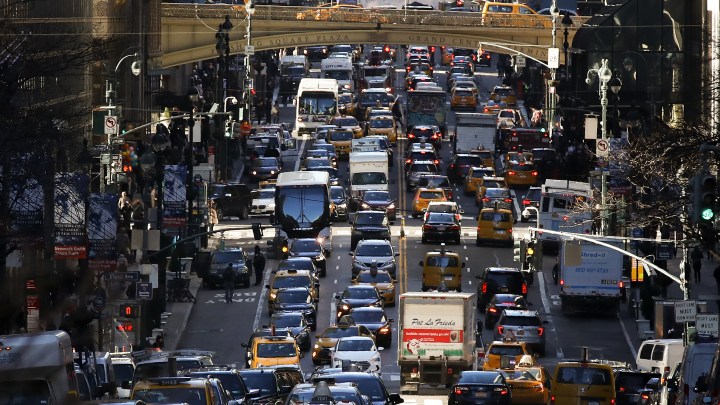
Proposed Manhattan congestion fee could make return to office even harder
Proposed Manhattan congestion fee could make return to office even harder

Residents of New York City have been expressing themselves — as only New Yorkers can — at a series of public hearings considering the city’s plan to charge motorists a toll to drive in Manhattan’s central business district.
Known as congestion pricing, this strategy to reduce car traffic — and all the bad stuff that comes with it — is already in practice in London, Singapore and Stockholm. New York’s plan could take effect as early as next year, with tolls as high as $23 to drive into Manhattan below 60th Street during peak hours.
The area includes midtown and the financial district, the same geography that businesses and city leaders are struggling to lure office workers back to.
Matthew Turner, an economist at Brown University, likes to explain how congestion pricing works by comparing how we treat roads to a bread line.
“We have all of this stuff, we make it available to people for free, people line up to use it, it gets full. And once it’s full, you have to wait for the system to clear out before you can use it.”
Charging tolls to use roads, like charging the market price for bread, disincentivizes crowding.
“People reschedule their trips, or take them by a different mode, or don’t take them at all,” he said.
It’s that last part — not taking trips at all — that might be a problem.
“The question of commuting to work and whether or not it makes sense to go into the office place has actually become a really big reason why people don’t,” said Brian Kropp, who leads human resources research at Gartner. Offices in New York have some of the lowest worker return rates in the country, he said.
The business group Partnership for New York City says only 8% of office workers are going in full time. And building security company Kastle shows office occupancy in the city leveling off at around 40%. A Manhattan congestion charge probably isn’t going to help, Kropp said.
“If you’re an employer, this just creates another hurdle that you have to overcome.”
New Yorkers have longer-than-average commutes. Of course, most — when they do go in — take public transit, not cars. But remote work, ongoing health concerns and some high-profile instances of transit violence have all taken tolls on ridership, which stands at about 60% of pre-pandemic levels.
“Transit is at a crucial turning point,” said Danny Pearlstein with the Riders Alliance.
With the revenue generated by the proposed congestion pricing — forecast at about $1 billion a year — transit service could be improved to attract riders lost during the pandemic, he added.
There’s a lot happening in the world. Through it all, Marketplace is here for you.
You rely on Marketplace to break down the world’s events and tell you how it affects you in a fact-based, approachable way. We rely on your financial support to keep making that possible.
Your donation today powers the independent journalism that you rely on. For just $5/month, you can help sustain Marketplace so we can keep reporting on the things that matter to you.

















